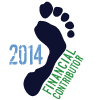Barefoot running: an evaluation of current hypothesis, future research and clinical applications
Does Barefoot Running Lead to a Higher Arch of the Foot?
I came across the article above through Dr. Craig Payne's blog. While he states that there is no evidence that barefoot running reduces the risk of injuries, he also says the same of cushioned shoes.The body of literature examining the mechanical, structural, clinical and performance implications of barefoot running is still in its infancy. Recent research has found significant differences associated with barefoot running relative to shod running, and these differences have been associated with factors that are thought to contribute to injury and performance. Crucially, long-term prospective studies have yet to be conducted and the link between barefoot running and injury or performance remains tenuous and speculative.
I thought that his theory on the arch and barefoot running was very interesting.The onus is also on those who claim that running shoes are better to come up with the evidence also. ... I never claimed there was any evidence [for cushioned shoes](in fact those who heard me lecture over 20+ yrs ago know that I was raising alarm bells back then).
Does Barefoot Running Lead to a Higher Arch of the Foot?





























